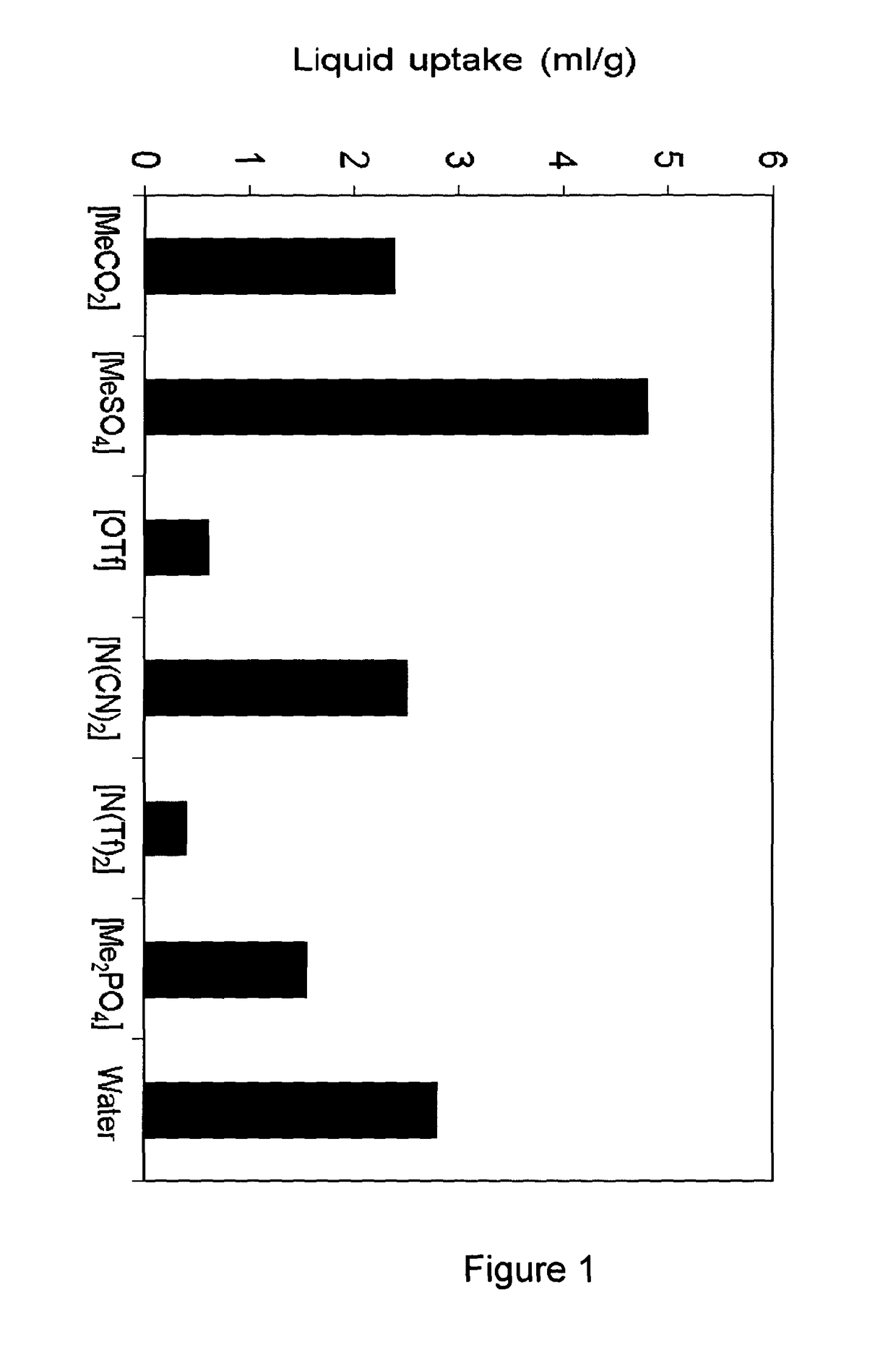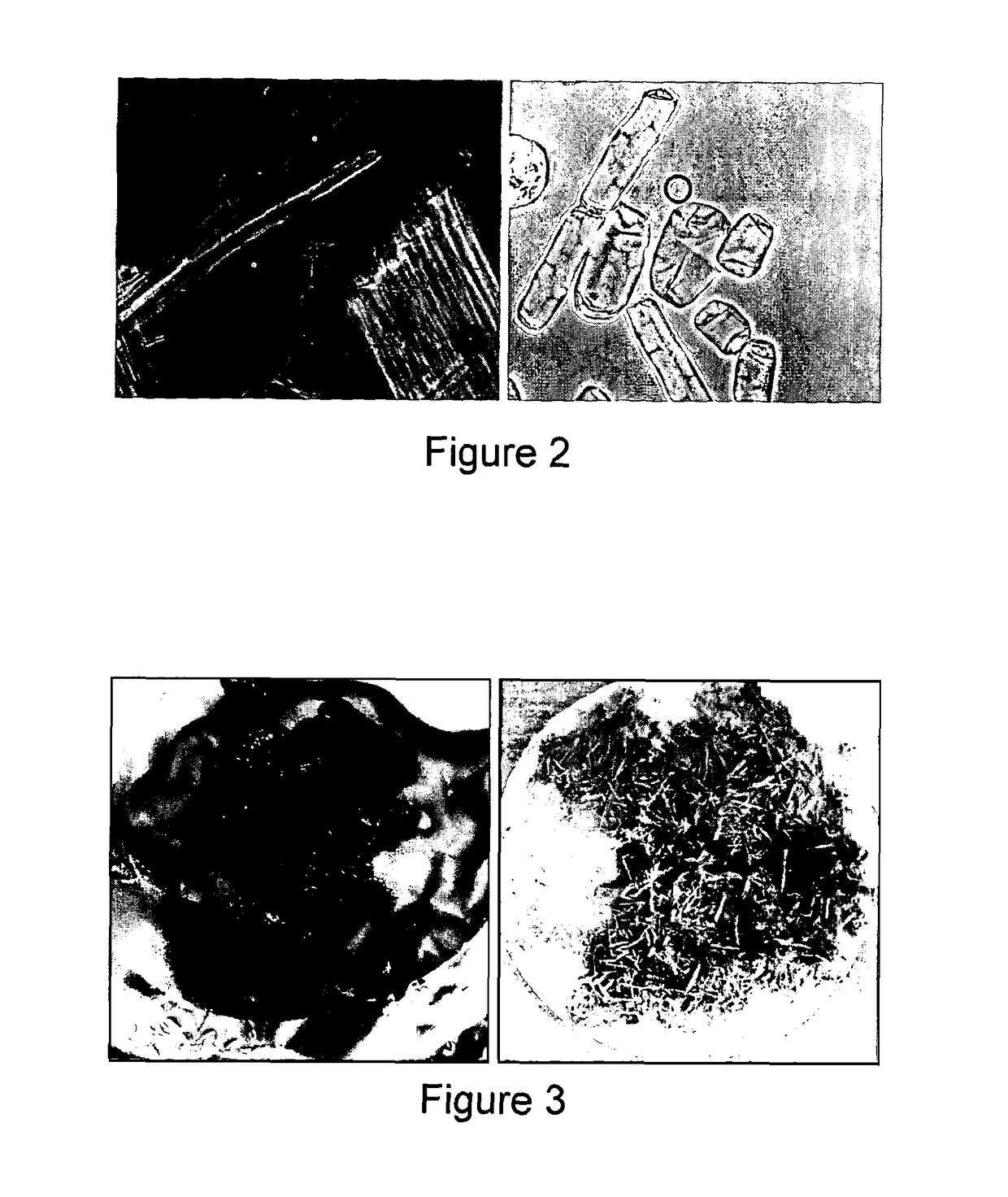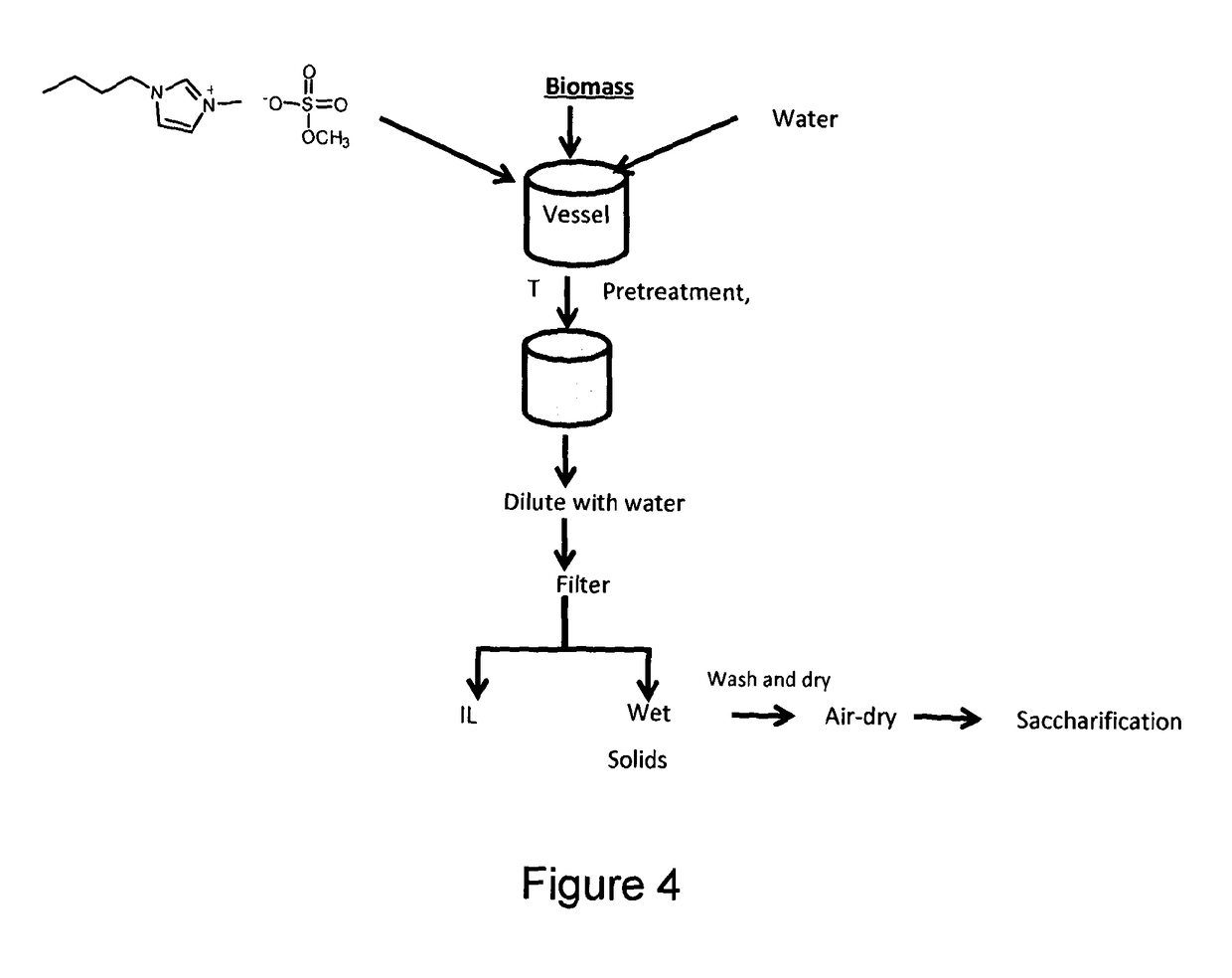Treatment of biomass to dissolve lignin with ionic liquid composition
a technology of ionic liquid composition and lignin, which is applied in the direction of cellulose treatment using microorganisms/enzymes, biofuels, lignin derivatives, etc., can solve the problems and achieves the effect of reducing saccharification yield and adding to processing costs
- Summary
- Abstract
- Description
- Claims
- Application Information
AI Technical Summary
Benefits of technology
Problems solved by technology
Method used
Image
Examples
example 1
[0102]Biomass
[0103]The lignocellulosic biomass was pine sapwood (Pinus sylvestris, variety SCOES) from East Sussex, willow (Salix sp. variety TORA) de-barked mixed stems and Miscanthus×giganteus. All biomass was stored air-dried at room temperature, ground and sieved (0.18-0.85 mm mesh) before use. Dry Miscanthus giganteus internodes (0=11 mm) were cut into discs of 5 mm height in order to obtain Miscanthus wood chips. The moisture content of untreated lignocellulose was 8.0% (Miscanthus), 8.9% (Pine) and 7.6% (Willow) based on oven-dry weight. The biomass was stored in plastic bags at room temperature.
Synthesis of 1-butyl-3-methylimidazolium hydrogen sulfate [C4C1im][HSO4]
[0104]170.67 g (682 mmol) [C4C1im][MeSO4](BASF quality) was mixed with 25 ml distilled water in a round-bottomed flask with Graham condenser followed by a horizontal Liebig condenser. The mixture was heated to reflux. The Graham condenser was cooled to 65° C. using a temperature-controlled circulator. The Liebig c...
example 2
[0127]Saccharification
[0128]Enzymatic saccharification was performed according to LAP “Enzymatic saccharification of lignocellulosic biomass” (NREL / TP-510-42629), issue date Mar. 21, 2008. 150 mg of untreated and pretreated air-dried sample was used per saccharification. When a pretreatment condition was run in duplicate or triplicate, saccharification was only performed once per sample. If the pretreatment condition was not replicated, the saccharification was performed in duplicate. The enzymes were T. reseei cellulase and Novozyme 188 cellobiase that also contains hemicellulolytic activity and can therefore hydrolyse xylan (both from Sigma-Aldrich). Glucose and hemicellulose yields were calculated based on the glucose and hemicellulose content of the untreated biomass, respectively.
[0129]Compositional Analysis
[0130]The compositional analysis (lignin, carbohydrates, ash) was performed according to Laboratory analytical procedure (LAP) “Determination of structural carbohydrates and...
example 3
[0143]Influence of Wash Solvent on Biomass Recovery and Fractionation
[0144]The previous examples indicate that the cellulose was significantly enriched in the pulp, which implies that some of the other components were removed. The low hemicellulose yield suggests that a significant fraction of the hemicellulose had been solubilised. However, the dark colour of the pretreatment liquor also suggests that part of the lignin was solubilised in the ionic liquid. Native lignin is not coloured, however, when lignin is chemically modified it often becomes darkly coloured, as can be seen with commercially available lignin preparations.
[0145]During the washing phase, the previously clear liquor became hazy upon dilution with distilled water and a fine precipitate began to settle. It was likely that this was lignin. Fractionation of lignin from the carbohydrate fraction has been part of the Organosolv pretreatment, from which Organosolv lignin can be obtained.
PUM
| Property | Measurement | Unit |
|---|---|---|
| Temperature | aaaaa | aaaaa |
| Fraction | aaaaa | aaaaa |
| Fraction | aaaaa | aaaaa |
Abstract
Description
Claims
Application Information
 Login to View More
Login to View More - R&D
- Intellectual Property
- Life Sciences
- Materials
- Tech Scout
- Unparalleled Data Quality
- Higher Quality Content
- 60% Fewer Hallucinations
Browse by: Latest US Patents, China's latest patents, Technical Efficacy Thesaurus, Application Domain, Technology Topic, Popular Technical Reports.
© 2025 PatSnap. All rights reserved.Legal|Privacy policy|Modern Slavery Act Transparency Statement|Sitemap|About US| Contact US: help@patsnap.com



